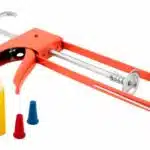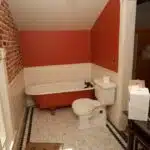Replacing a bathtub is a complex process that requires careful planning and execution. As a bathroom remodeler or renovator, it is essential to understand the various steps involved in replacing a bathtub and how to complete them efficiently. Whether you are replacing an old or damaged bathtub or simply upgrading to a larger, more luxurious model, this article will provide you with the necessary information on how to replace your bathtub.
In this article, we will cover the key steps involved in replacing a bathtub, including removing the old tub, preparing the space for installation of the new tub, and installing the new tub. We will also discuss the different types of bathtubs available on the market today and provide tips on selecting the right one for your needs. By following our expert advice and guidance, you can ensure that your bathtub replacement project goes smoothly and results in a beautiful new bathroom that meets your specific requirements.
Assessing Your Bathtub Replacement Needs
Replacing a bathtub can be an exciting yet daunting task for homeowners. It is an opportunity to update the bathroom’s look and feel, but it also requires careful planning and execution. Before starting the replacement process, it is essential to assess your bathtub replacement needs. This involves measuring dimensions, evaluating damage, and determining the best type of bathtub for your bathroom.
Measuring dimensions is a crucial step in replacing a bathtub. You need to determine the size of your current bathtub and ensure that the new one fits in the same space. Measure the length, width, and depth of your tub to find a suitable replacement. Additionally, measure the distance from the drain to the wall and from one wall to another. These measurements will help you choose a new tub that fits perfectly in your bathroom.
Evaluating damage is another critical aspect of assessing your bathtub replacement needs. Check for any cracks or leaks in your current tub that may have caused water damage or mold growth in surrounding areas. If there are any issues with plumbing or water supply lines, they should be addressed before installing a new tub. Once you have evaluated any potential issues, you can move on to measuring your bathtub space and selecting a new tub that meets your needs and preferences.
Measuring Your Bathtub Space
- Accurately determining the size of the bathtub space is a critical step in the bathtub replacement process.
- Measuring the depth of the existing bathtub will help inform the selection of a new bathtub that will fit within the existing space.
- Calculating the total area of the bathtub space is important when considering the shape and dimensions of a new bathtub.
- Bathroom renovators should always take precise measurements to ensure the new bathtub will fit properly and safely.
- It is recommended to measure twice and cut once to ensure the accuracy of the measurements.
- An experienced bathroom remodeler should be consulted to ensure the bathtub replacement process is successful.
Determining The Size
Determining the size of your bathtub space is a crucial step in replacing your bathtub. This is because the size of your current bathtub will determine what kind of replacement can be installed in its place. To determine the size, you need to take precise measurements of the entire area where your current bathtub sits.
Common bathtub dimensions include 60 inches long by 30 inches wide for standard tubs and 72 inches long by 36 inches wide for larger soaking tubs. However, it’s important to remember that not all bathtubs are made equal, and there may be variations in size depending on the manufacturer or style. Additionally, you should measure not only the length and width but also the depth of your current bathtub space to ensure that you choose a replacement with a similar or compatible height.
Once you have determined the exact dimensions of your current bathtub space, you can begin researching replacement options that fit within those parameters. It’s important to keep in mind any additional features or requirements you may have, such as accessibility needs or desired materials. With careful measurement and consideration, selecting a new bathtub that fits seamlessly into your existing space can be an easy and stress-free process.
Measuring Depth
When it comes to replacing your bathtub, accurate measurement is a crucial step in ensuring a seamless installation. While measuring the length and width of your current bathtub space is important, it’s equally essential to measure the depth. This measurement will determine the height of the replacement tub you can install, ensuring that it fits snugly into the existing space without any unsightly gaps or awkward angles.
Measuring the depth of your current bathtub space can be more challenging than simply using a measuring tape. Depending on the layout of your bathroom, obstacles such as tiles or built-in features may make it difficult to get an accurate reading with traditional tools. However, there are alternative methods you can use to measure depth effectively, including laser levels or digital inclinometers. These tools offer precise measurements and can help you overcome any obstacles in your way.
When measuring depth for your bathtub replacement, it’s important to take into account any additional factors that may impact the height of your new tub. For example, if you plan on installing a shower unit above the tub, you’ll need to ensure that there is enough clearance between the top of the tub and the ceiling. Additionally, accessibility needs may require a lower or higher height for ease of entry and exit. By taking these factors into consideration along with accurate depth measurements, you can select a bathtub replacement that meets all of your requirements and fits perfectly into your existing space.
Calculating Area
Accurately measuring your bathtub space is a crucial step in any bathroom renovation project. Aside from measuring the length, width, and depth of the existing tub, calculating the area of the space is equally important in determining the appropriate size and style of replacement. Calculating area involves multiplying the length and width measurements to determine the total square footage of the space.
When calculating area for your bathtub replacement, it’s important to consider any additional features or fixtures that may impact the available space. For example, if there is a built-in shelf or niche adjacent to the tub, deducting its dimensions from your overall calculations will help ensure that your new tub fits perfectly into place. Additionally, if you plan on installing a larger or more luxurious replacement tub, it’s essential to ensure that you have enough room for comfortable use without overcrowding the rest of your bathroom.
Accuracy is key when it comes to calculating area for your bathtub replacement. Even small miscalculations can result in an ill-fitting or awkwardly arranged tub installation that detracts from both function and aesthetics. By enlisting professional assistance or utilizing accurate measurement tools such as laser levels or digital inclinometers, you can be sure that your bathtub dimensions and calculated area are precise and ready for a seamless replacement process.
Choosing The Right Bathtub Type
When it comes to replacing a bathtub, choosing the right type is crucial. There are two main types of bathtubs: freestanding and built-in. Freestanding tubs are not attached to any walls or fixtures, while built-in tubs are surrounded by walls and may be connected to a showerhead.
Another factor to consider when selecting a bathtub is the material it’s made from. Acrylic and cast iron are two common materials used for bathtubs. Acrylic is lightweight, durable, and easy to clean, making it a popular choice for homeowners. Cast iron, on the other hand, is heavy and sturdy, providing excellent heat retention for long soaks.
When deciding between freestanding vs. built-in bathtubs and acrylic vs. cast iron materials, there are several additional considerations to keep in mind. Aesthetic preferences should be taken into account as well as practical matters such as budget, plumbing requirements, and installation time frame. Ultimately, the best bathtub for your needs will depend on your unique situation.
Selecting your bathtub style and material can feel overwhelming at first glance but with careful consideration and guidance from an experienced professional in bathroom renovation you can make an informed decision that meets your specific needs and desires without compromising quality or functionality of your new bathtub replacement project.
Selecting Your Bathtub Style And Material
When considering a replacement bathtub, it is important to first be aware of the different types of bathtub materials, such as acrylic, fiberglass and cast iron. Additionally, it is important to familiarize yourself with the various bathtub styles, which can range from a classic freestanding tub to a walk-in tub. Each material and style offers its own unique advantages and disadvantages when it comes to replacing a bathtub. It is important to consider all available options before making a final decision.
Types Of Bathtub Materials
When selecting your bathtub style and material, it is important to consider the different types of bathtub materials available in the market. Each type of material has its own set of pros and cons that can affect the durability, maintenance, and overall look of your tub.
One popular material for bathtubs is cast iron. Cast iron is known for its durability and longevity, making it an ideal choice for those who want a tub that can last for a long time. However, this material is also very heavy and may require additional support during installation. Maintenance-wise, cast iron requires regular cleaning with non-abrasive cleaners to avoid damaging the finish.
Another option is acrylic, which is lightweight, easy to install, and comes in a variety of colors and shapes. Acrylic bathtubs are also more affordable compared to other materials like cast iron or stone. However, they may scratch easily and require regular cleaning with mild soap to avoid discoloration or damage.
Lastly, there’s fiberglass-reinforced plastic (FRP), which is another popular option because it’s lightweight yet durable. FRP bathtubs are also affordable and come in different styles and colors. However, this type of material may crack or fade over time if not properly maintained. It’s recommended to use only non-abrasive cleaners when cleaning FRP tubs.
In conclusion, choosing the right bathtub material depends on your personal preferences as well as practical considerations like durability and maintenance requirements. By understanding the pros and cons of each type of material available in the market, you can make an informed decision that will ensure your new bathtub will serve you well for years to come.
Bathtub Styles
When it comes to selecting your bathtub style and material, there are a few things to consider. One important factor is the style of the tub itself. There are two main types of bathtub styles: freestanding and built-in. Freestanding tubs are not attached to any walls or surrounding structures and can be placed anywhere in the bathroom, while built-in tubs are typically recessed into a corner or alcove.
Another consideration is whether you want a soaking tub or a whirlpool tub. Soaking tubs are deeper and wider than standard bathtubs, allowing for a more immersive bathing experience. Whirlpool tubs, on the other hand, have jets that circulate water around the body for a massaging effect. Both options have their own benefits, so it’s important to choose one that best suits your needs and preferences.
When selecting your bathtub style and material, it’s important to keep in mind the overall look and feel of your bathroom. A freestanding soaking tub can create a spa-like atmosphere, while a built-in whirlpool tub may be better suited for families with children who enjoy playing in the water. Ultimately, choosing the right bathtub style depends on your personal preferences and lifestyle needs.
Budgeting For Your Bathtub Replacement
Bathtub replacement budgeting: tips, tricks
When it comes to replacing a bathtub, one of the most important considerations is budgeting. There are many factors that can affect the cost of a bathtub replacement, including the size and type of bathtub you choose, as well as any additional work that may be required to install it. To help you stay within your budget, here are some tips and tricks to keep in mind.
Firstly, consider affordable bathtub replacement options and alternatives. If you’re working with a limited budget, there are several options available that can help you save money on your bathtub replacement. For example, instead of choosing a high-end model with all the bells and whistles, opt for a simpler design that will still meet your needs. Additionally, consider purchasing a used or refurbished bathtub rather than buying new.
Another way to save money on your bathtub replacement is to do some of the work yourself. While certain tasks (such as plumbing) should always be left to professionals, there are other aspects of the installation process that can be tackled by DIY enthusiasts. By doing some of the work yourself, you can reduce labor costs and keep your overall expenses down.
Affordable bathtub replacement: options, alternatives
In addition to considering affordable options and doing some DIY work yourself, there are other ways to save money on your bathtub replacement project. For example, shop around for materials and supplies to find the best deals. You may also want to consider hiring a contractor who specializes in bathroom remodeling or renovation; they may have access to discounted materials or be able to negotiate lower prices on your behalf.
Finally, don’t forget about hidden costs when budgeting for your bathtub replacement project. For example, if your existing plumbing is outdated or not up-to-code, you may need to pay for upgrades or repairs before installing your new tub. Similarly, if there are any structural issues that need addressing (such as rotting floorboards), you’ll need to factor in the cost of those repairs as well.
As you plan your bathtub replacement project, keep these tips and tricks in mind to help you stay within your budget. By exploring affordable options and doing some DIY work yourself, you can save money without sacrificing quality. And by factoring in hidden costs and shopping around for materials, you can ensure that your bathtub replacement project is a success. In the next section, we’ll discuss gathering the necessary tools and supplies for your bathtub replacement project.
Gathering The Necessary Tools And Supplies
To replace a bathtub, you will need certain tools and supplies to ensure that the process goes smoothly. Some of the necessary tools include a pry bar, adjustable wrench, reciprocating saw, pliers, caulk gun, and safety glasses. Additionally, you will need new plumbing fixtures such as a drain assembly and overflow plate. It is important to gather all of these materials before starting the project.
Shopping tips are essential when purchasing replacement materials for your bathtub renovation project. When selecting new fixtures, consider the material and finish of your current hardware to ensure a cohesive look. Also, be sure to measure your existing fixtures to ensure that they are compatible with your new bathtub. Take note of the manufacturer’s recommendations and consult with experts if you have any questions.
If you’re on a budget or prefer DIY alternatives, there are options available for replacing your bathtub without hiring professionals. Consider refinishing or reglazing your current bathtub instead of buying a brand new one. This process involves repairing chips or cracks in the existing tub surface then applying a new finish. Another option is installing an acrylic liner over your existing tub which can be purchased at most home improvement stores.
It is crucial to turn off the water supply before beginning any work on your bathtub renovation project. Failure to do so could lead to flooding or damage to pipes and fixtures. To turn off the water supply, locate the main shut-off valve in your home and turn it clockwise until it is completely closed. Be sure to test that the water supply has been successfully turned off by turning on faucets in other areas of your home before proceeding with any work on your bathtub.
Turning Off The Water Supply
You’re now ready to replace your bathtub, but before you start, it’s important to turn off the water supply for safety reasons. Follow these simple steps on how to turn off the water supply in your bathroom.
First, locate the main water valve in your home. This valve is typically located near the water meter or where the main water line enters your house. Turn the valve clockwise until it stops to shut off the water supply. If you have trouble locating or turning off the valve, consult a professional plumber for assistance.
Safety precautions when turning off the water supply include wearing protective gloves and eyewear. Also, make sure that all electrical appliances and switches are turned off before proceeding with any work in your bathroom. By taking these precautions, you can ensure a safe and successful bathtub replacement project. Now that you’ve turned off the water supply, it’s time to move on to removing the old bathtub.
Removing The Old Bathtub
- In order to safely remove an old bathtub, one must gather the necessary supplies including a screwdriver, protective eye wear, wrenches, and a hacksaw.
- Before beginning, it is important to shut off the water supply to the bathtub to prevent any potential water damage.
- To disconnect the drain, it is necessary to unscrew the nuts that attach the drain to the bathtub and take out the seal.
- Once the drain is removed, one must cut the caulk with a utility knife and remove the overflow plate.
- In some cases, the bathtub may be mounted to the wall, in which case it is necessary to pry off the nails that secure the tub to the wall.
- Finally, the tub can be lifted off the floor and taken out of the bathroom.
Gather Supplies
To successfully remove an old bathtub, the first step is to gather all necessary supplies. As a bathroom remodeler, I recommend starting by assessing the tools you already have on hand, such as a reciprocating saw and utility knife. If you don’t have these tools, they can be purchased at home improvement stores like Home Depot or Lowe’s. Additionally, consider purchasing a pry bar, pliers, and a wrench to ensure that you have everything needed for the job.
When it comes to replacing your bathtub, it’s important to choose high-quality materials to ensure that your new tub will last for years to come. While options like acrylic and fiberglass are more affordable than other materials like cast iron or porcelain, they may not be as durable in the long run. Consider the needs of your household when making this decision. Once you’ve chosen your new bathtub material, research where to buy it in order to get the best deal. Home improvement stores often sell tubs at competitive prices.
Finally, don’t forget about additional supplies such as caulk or adhesive if needed for installation. These small items can add up in cost but are essential for ensuring that your new bathtub is properly installed and sealed. When planning your budget for this project, take into account all costs associated with gathering supplies and purchasing materials so that there are no surprises down the line. With careful planning and preparation beforehand, replacing an old bathtub can be achieved without breaking the bank or sacrificing quality craftsmanship.
Shut Off Water
To successfully remove an old bathtub, it’s important to start with shutting off the water supply. As a bathroom remodeler, I recommend turning off the main water supply valve for your home. This will ensure that no water flows into the bathroom where you’ll be working on replacing the tub.
It’s crucial to know how to properly shut off water for bathtub replacement in order to avoid common mistakes. One mistake homeowners often make is only turning off the valves located near the bathtub. However, this doesn’t completely stop water flow as there may still be residual water in the pipes leading up to the bathroom. Another mistake is not testing whether the supply has been properly shut off by turning on a faucet after shutting off the valve.
To avoid these problems, turn off the main water supply valve for your home and test it by running a faucet in another area of your home before beginning work on removing your old bathtub. By following these steps, you’ll ensure that no unexpected leaks or damage occur during this process and that you’re fully prepared for installing your new bathtub.
Disconnect Drain
When it comes to removing an old bathtub, there are several important steps to follow. One of these crucial steps is disconnecting the drain. This ensures that the old tub can be removed without damaging any plumbing components or causing leaks. As a bathroom remodeler, I recommend following some tips for avoiding common mistakes and ensuring the proper disposal of your old bathtub.
To begin, start by locating the drain under your bathtub. You may need to remove any access panels or covers to access it fully. Once you’ve located the drain, use a wrench to loosen and remove the nut that holds the pipe in place. This will allow you to remove the drain and disconnect it from the tub completely.
It’s essential to properly dispose of your old bathtub after disconnecting the drain. Depending on where you live, there may be specific regulations regarding how to dispose of large items like bathtubs. Some areas require that you take it to a designated waste management facility while others allow curbside pickup with special arrangements made in advance. As a professional bathroom renovator, I recommend researching local regulations and contacting waste management services ahead of time to ensure proper disposal of your old tub.
Preparing The Space For The New Bathtub
Now that the old bathtub has been removed, it is time to prepare the space for the new bathtub installation. This step is crucial in ensuring that the new bathtub fits perfectly and functions smoothly. Here are some tips on preparing the space for a bathroom renovation:
Remove any debris or leftover materials from the previous bathtub installation. Clean the area thoroughly using a disinfectant cleaner to avoid any mold or mildew growth.
Check if there are any leaks in the plumbing system. Repair any leaks as necessary before proceeding with the installation.
Measure the dimensions of your new bathtub and make sure that it fits perfectly into your bathroom space. Take note of any fixtures, such as faucets and shower heads, and ensure that they align with your new bathtub’s location.
By following these steps, you can ensure a successful bathroom renovation project and avoid any unnecessary complications during the installation process. Once you have prepared the space for your new bathtub, you can proceed with installing it seamlessly without worrying about any potential issues arising from inadequate preparation.
Installing The New Bathtub
Have you successfully removed your old bathtub and are now ready to move onto installing the new one? Before diving into the installation process, it’s important to have a plan in place. The first step is to make sure that the new bathtub fits snugly into place, so be sure to measure the space beforehand.
Bathtub installation tips can save you time and money in the long run. One common mistake to avoid is not utilizing enough support for your new bathtub. Make sure that your new bathtub is properly supported by framing under it before you install it. Another mistake is not ensuring a level installation, which can cause leakage over time.
Connecting the drain and overflow can be a tricky process, but with patience and attention to detail, it can be done correctly. The first step is to attach the overflow assembly by tightening screws around its flange. Next, connect the drain assembly by inserting it through the drain hole and tightening it with pliers. Finally, connect both assemblies together with a rubber gasket and tighten all connections.
Incorporating a table can help visualize important information for an audience that may feel overwhelmed by technical details of installing a bathtub. Here’s an example of such a table:
| Common Mistakes | Bathtub Installation Tips |
|---|---|
| Not using enough support | Ensure proper framing |
| Improper leveling | Check for level before installation |
| Incorrectly connecting drain and overflow | Connect overflow assembly first |
Remember that each bathroom remodel or renovation project will have its unique challenges and considerations. By taking careful measurements beforehand and heeding these bathtub installation tips while avoiding common mistakes, you’ll be well on your way to enjoying your newly installed bathtub in no time!
Connecting The Drain And Overflow
Next, it’s time to connect the drain and overflow. Begin by installing the overflow according to the manufacturer’s instructions. Generally, this involves inserting the gasket and attaching the flange with screws. Make sure that the overflow is level before tightening the screws.
After installing the overflow, it’s time to attach the drain assembly. Apply plumber’s putty around the underside of the drain flange before inserting it into the drain hole in your bathtub. Tighten it down and wipe away any excess putty that seeps out.
Lastly, attach the drain linkage according to your manufacturer’s instructions. This will typically involve sliding a rod through a hole in your drain assembly and securing it with a nut underneath your bathtub. Once everything is securely attached, test your connections by filling up your bathtub with water and checking for leaks.
- Double check that all connections are tight before testing for leaks.
- Clean up any excess plumber’s putty or silicone caulk once you’re finished.
- If you’re not confident in your plumbing skills, consider hiring a professional to assist with this step.
Next up is sealing and caulking your new bathtub!
Sealing And Caulking The Bathtub
1.Prior to applying the caulk, the surface of the bathtub needs to be thoroughly cleaned and dried in order to ensure optimal adhesion. 2.Caulk should be applied in one continuous bead along the seam, ensuring that the caulk is evenly distributed. 3.It is important to firmly press the caulk into the seam and smooth the surface so that it is flush with the bathtub. 4.In order to prevent any water from seeping in, the caulk should be applied in both the horizontal and vertical joints. 5.Once the caulk has dried, any excess that is visible should be carefully removed. 6.For additional protection and to enhance the overall look of the bathtub, a sealant should be applied to the entire surface.
Cleaning The Surface
To ensure a successful bathtub replacement, one must not overlook the importance of cleaning the surface before sealing and caulking. Choosing the right cleaning products is crucial to removing any dirt, grime, or soap scum that has accumulated over time. It is recommended to use non-abrasive cleaners that are safe for your specific bathtub material. This will prevent any damage and prolong the life of your new tub.
Preventing future stains is also an important aspect of cleaning. After thoroughly cleaning the surface, it’s best to apply a protective coating that repels water and prevents stains from forming. This can be done using specialty products designed for bathtubs or by applying car wax to the surface. It’s important to note that regular cleaning and maintenance will still be necessary even with a protective coating applied.
Cleaning and sealing the surface may seem like a small task in comparison to replacing an entire bathtub, but it can greatly impact the longevity and appearance of your new tub. Taking the time to properly clean and protect your tub will save you from future headaches and expenses. As bathroom remodelers, we prioritize providing our clients with long-lasting solutions that meet their needs while also preventing future issues from arising.
Applying Caulk
Sealing and caulking the bathtub is an essential step in ensuring a successful bathtub replacement. Applying caulk is vital to prevent water from seeping into the gaps between the bathtub and the surrounding tiles or walls. Failure to properly apply caulk can lead to water damage, mold growth, and other problems that can be costly to repair. As bathroom remodelers, we understand the importance of using quality caulk brands and applying it smoothly.
Using the best caulk brands is crucial for a long-lasting seal. Some popular options include silicone, latex, and hybrid caulks. Each type has its strengths and weaknesses depending on factors such as flexibility, durability, and ease of use. Our team recommends researching which type will work best for your specific bathtub material and needs before making a purchase. Investing in high-quality caulk will save you time and money in the long run.
Tips for applying caulk smoothly include preparing the surface beforehand by cleaning it thoroughly and allowing it to dry completely before application. Using a caulking gun is recommended for even distribution of caulk along the edges of the tub. Starting at one end, apply steady pressure while moving the gun along the edge in a continuous motion until complete coverage is achieved. It’s also important to smooth out any bumps or excess material using a damp finger or a specialized tool before allowing it to dry completely. By following these tips, you can ensure proper sealing that will last for years to come.
Finishing Touches
After sealing and caulking the bathtub, there are still some finishing touches that can make your bathroom renovation project stand out. One of the simplest but most important things to consider is the bathmat options. A high-quality bathmat not only adds a decorative touch but also helps prevent slips and falls in wet areas. When selecting a bathmat, consider materials that are durable, absorbent, and easy to clean.
Another crucial aspect to consider when finishing up a bathtub replacement project is faucet selection. There are many different types of faucets available on the market today, including wall-mounted, deck-mounted, and freestanding options. The type of faucet you choose will depend on your personal preferences as well as the style of your bathroom. It’s always important to select a high-quality faucet that is both functional and stylish.
Finally, don’t forget about other small details that can enhance your overall bathroom design such as soap dispensers or towel racks. These little touches can make a big impact on the overall look and feel of your new bathroom space. As professional bathroom remodelers, we understand how these details come together to create a cohesive design that brings joy and functionality to our clients’ lives.
Testing Your New Bathtub
After successfully installing a new bathtub, it is important to test its durability and ensure that safety precautions are taken into consideration. One way to test the bathtub’s durability is to fill it up with water and let it sit for at least 24 hours. This will allow you to check for any leaks or cracks in the tub. Additionally, you can test the water pressure by turning on the faucet and checking if there are any leaks around the drain.
In terms of safety precautions, it is important to make sure that the bathtub is securely fastened to the wall and floor. You can do this by checking if there are any loose screws or bolts and tightening them accordingly. It is also recommended to install grab bars on the walls surrounding the bathtub for added support when entering and exiting the tub, especially for those with mobility issues.
Overall, testing your new bathtub’s durability and taking necessary safety precautions are crucial steps in ensuring a successful bathroom remodel. By doing so, you can prevent any potential accidents or damages down the line and enjoy your new fixture with peace of mind.
As we conclude testing our newly installed bathtub, we move onto finishing touches and cleanup. It is important to clean up any debris from installation such as sawdust or plastic packaging materials before putting away tools used for installation. We will now go over these final steps to complete our bathroom renovation project.
Finishing Touches And Cleanup
Once the bathtub installation is complete, it’s important to properly finish and clean up the area. Begin by removing any debris and cleaning the surrounding surfaces thoroughly. Use a mild cleaning solution to wipe down the walls, floors, and fixtures in the bathroom. This will help remove any dust or dirt that may have accumulated during the installation process.
Next, consider decorative options for your newly installed bathtub. Add some color with a bright shower curtain or bathmat, or opt for more neutral tones for a relaxing atmosphere. You can also add some decorative elements such as candles or plants to create a spa-like ambiance in your bathroom. Don’t forget to coordinate your new bathtub with other fixtures in the room such as towel racks and toilet paper holders.
Cleaning tips are an essential part of maintaining your new bathtub’s appearance and functionality. Regularly clean and dry the surface of your bathtub after each use to prevent mold and mildew buildup. Avoid using abrasive cleaners that can scratch or damage the surface of your tub. Instead, use gentle cleansers designed specifically for bathtubs to maintain its shine and beauty over time.
Transition: Now that you know how to finish and decorate your newly installed bathtub, let’s move on to discussing how you can maintain it for years to come.
Maintaining Your New Bathtub
As a bathroom remodeler, it is important to not only install a new bathtub properly but also educate customers on how to maintain their investment. One common concern that homeowners have is preventing scratches on the surface of their new bathtub. While scratches can occur over time with regular use, there are ways to minimize them. One way to prevent scratches is to avoid using abrasive cleaners or tools when cleaning the surface of the bathtub. Instead, opt for gentler cleaning solutions and soft cloths or sponges.
Proper cleaning techniques are also important in maintaining a new bathtub. It is recommended to clean the surface of the tub after each use with a mild soap and water solution. Avoid using harsh chemicals or bleach-based products as they may damage the surface of the tub over time. Additionally, it is important to rinse off any soap residue thoroughly after each use to prevent buildup.
By following these tips, homeowners can help ensure their new bathtub stays looking its best for years to come. As a bathroom renovator, I always stress the importance of proper maintenance and offer additional advice based on specific materials used in each installation. Whether it’s an acrylic or porcelain tub, taking care of it properly will extend its lifespan and keep its appearance pristine.
Conclusion
Bathtub replacement is a complex task that requires careful planning and execution. The process involves assessing your needs, measuring the bathtub space, choosing the right type and style of bathtub, budgeting for the replacement, sealing and caulking the new bathtub, testing it for leaks, finishing touches and cleanup, and maintaining it properly. It is essential to approach this project with a clear understanding of its requirements and challenges to ensure a successful outcome.
One common theory about bathtub replacement is that it can be done easily by DIY enthusiasts. However, this assumption is not entirely accurate as there are many technical aspects involved in the process that require professional expertise. A bathroom renovator or remodeler has the knowledge, skills, and tools necessary to handle any unexpected issues that may arise during the replacement. It is always better to seek professional help rather than risking costly mistakes that can damage your home’s plumbing system or compromise your safety.
In conclusion, replacing a bathtub requires careful planning and execution to achieve desirable results. It is important to choose a reputable bathroom renovator or remodeler who has experience in handling such projects. By following these guidelines, you can transform your old bathtub into a beautiful new centerpiece that adds value to your home while providing you with years of comfort and enjoyment.
Image Credits
- “Bathtub” by autowitch (featured)










![How To Replace A Bathtub Drain In A Mobile Home 10 2/365 [Bathtub Drain]](https://green-life.blog/wp-content/uploads/2023/05/3ft8KAJsNnjq-150x150.jpg.webp)






![How To Get Hair Out Of A Bathtub Drain 17 2/365 [Bathtub Drain]](https://green-life.blog/wp-content/uploads/2023/05/cOEu5edpkejq-150x150.jpg.webp)











